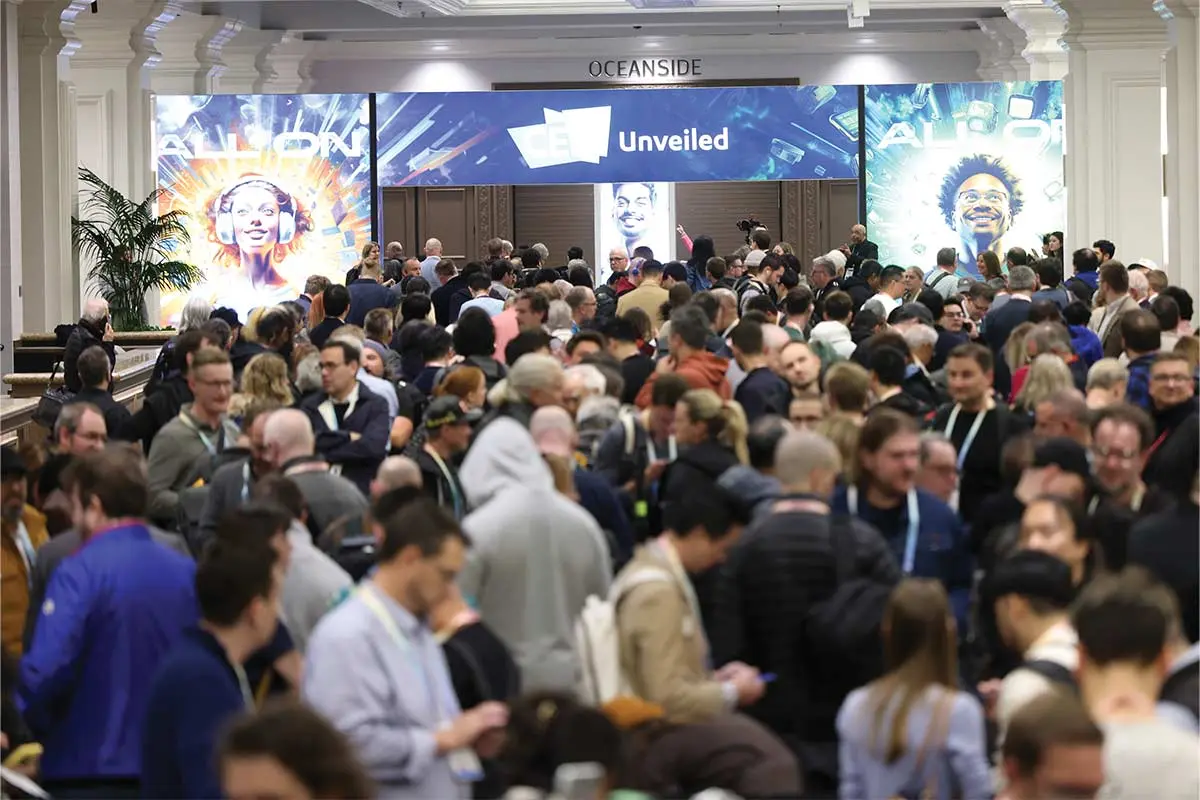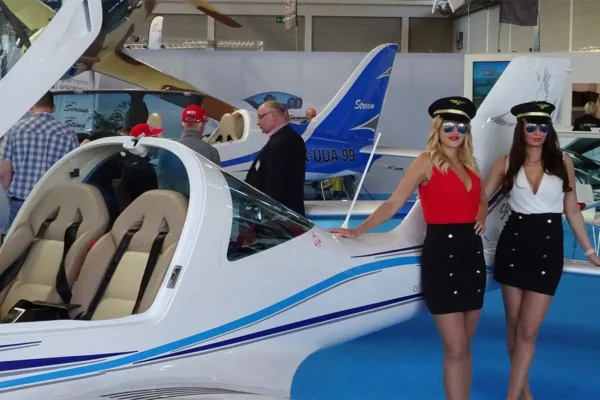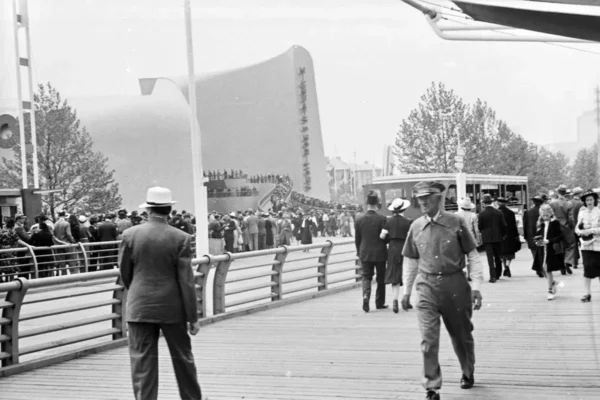The Consumer Electronics Show (CES) is a cutting-edge technology event that brings next-generation ideas and products to the exhibit floor. It allows industry professionals to see, touch, compare—and sometimes even use—the newest and coolest gadgets. It allows retailers and vendors to make deals and order items six-to-nine months in advance of the holiday buying season.
CES 2024 was one of the largest tech shows in the world, as well as the largest tradeshow in the States. In January of 2024, it displayed products in over 2.5 million square feet of exhibit space, hosted more than 4,300 exhibiting companies, and attracted over 135,000 attendees—including the most international attendees at this show in its 57-year history. With a record 1,400 new start-ups, and over 300 of the Fortune 500 companies represented, it was the place to see, be seen, and to do business.
CES attracts massive crowds, showcases cutting-edge technology, and displays breathtaking, museum-quality, brand architecture. But that wasn’t always the case.
The show started in 1967 as a spinoff from the Chicago Music Show. Located in two separate New York City hotels, the first show hosted approximately 100 exhibitors and attracted 17,500 attendees. For the first decade, the show was dominated by the music industry and was unique for the number of international exhibitors and their “booth babes.” Some of the early exhibitors included LG, Motorola, and Phillips. Sony joined the show floor in 1971 when the show relocated to Chicago. It expanded to three hotels in New York, before moving to Chicago in 1971. The show attracted 40,000 attendees in 1972 and by 1977, the show attracted 50,000 attendees and had 700 exhibitors.
A second event, called The Winter Show, opened in Las Vegas in 1978 with a half million net square feet of exhibit space. In 1984, CES attracted over 100,000 attendees at each of their shows, both the summer and winter events. Between 1994 and 1997, CES experimented with shows in six different cities—Chicago, Las Vegas, Mexico City, Philadelphia, Atlanta, and Dallas — before settling on one show a year. That show was in Las Vegas. In 1997, the show broke the million square foot barrier, and has never looked back.
Some products debuting at those shows in the early years were: VCRs in 1970, Pong in 1975, Atari in 1979, CDs in 1981, Commodore 64 in 1982, Amiga (the first “home computer”) in 1984, and Nintendo in 1985. The John Madden video game appeared in the early ’90s. DVDs premiered in 1996, HDTV in 1998, Xbox in 2001, and Blu-ray discs in 2004. Other items showcased on the exhibit floor over the years included satellite radio, computer tablets, and notebooks. A few automobile brands were present off the show floor as early as the late 1990s, but car technology did not take off at CES until the 21st century. Self-driving cars were present in 2014, with electric vehicles appearing in 2016.
Some of the attractions on the show floor in 2024 were:
A 4K-wireless, transparent TV from LG.
A prototype flying car from Xpeng Aeroht.
A 22-ton autonomous tractor from John Deere.
Robots, hydrogen cars, electric vehicles, healthcare tech wearables.
A super dehumidifier producing 120 gallons of water a day.
Compact solar-powered emergency generators.
A pedal desk capable of charging cell phone and other devices.
Designer glasses that aid the hearing impaired.
Exquisite designs and interactive exhibits from myriad display houses.
Each January, CES showcases present day technology demonstrating future possibilities. This show is one more example of how and why tradeshows work—they work very well.
Willwork creates labor and technology solutions for experiential marketing applications, including tradeshow exhibits, corporate events, brand activations, and themed retail environments. Bob McGlincy is director, business management. He can be reached at Bob.McGlincy@willwork.com
This story originally appeared in the Q4 2024 issue of Exhibit City News, p. 18. For original layout, visit https://issuu.com/exhibitcitynews/docs/ecn_q4_2024/18.































